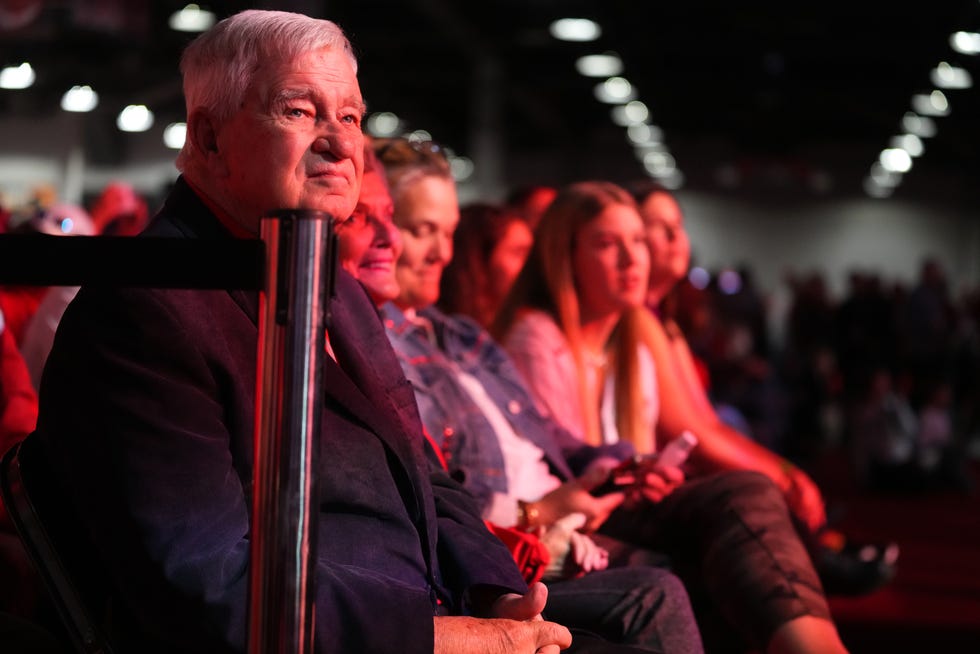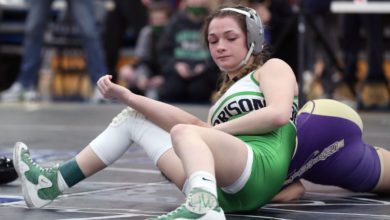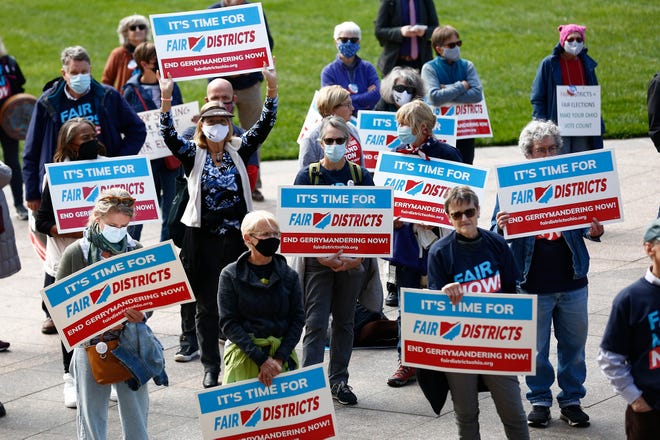
Five Major League Baseball players have received contracts worth more than $185 million through free agency this winter with the possibility of two more players joining that group.
The Cincinnati Reds, meanwhile, haven’t given a free agent a contract above $64 million in franchise history.
That is where the Reds reside in baseball’s hierarchy as Bob Castellini’s ownership group cuts payroll for the third consecutive offseason, dwarfed by some of the big-market clubs whose teams are willing to reach and exceed the sport’s luxury tax. The Reds currently have around $68 million committed to their 2023 team payroll.
Reds offseason:What we learned about their offseason plans at winter meetings
Reds rebuild:Lagging behind division rivals, Cincinnati sticks to rebuilding plan
MLB Draft lottery:Reds take another loss, drop in 2023 draft order

The Reds don’t have a guaranteed contract on their ledger past the 2023 season, excluding arbitration-eligible players, with buyouts available for Joey Votto and Mike Moustakas. It’s as much financial flexibility as any team as their next wave of prospects reaches the big leagues.
At some point, the Reds will have to fill that blank slate and put a stake into the ground for the players they want to build around long-term. Atlanta, as much as any team, has aggressively signed much of its young core to contract extensions. The Chicago White Sox similarly went that route with worse results regarding playoff success.

Reds General Manager Nick Krall had several conversations about a contract extension with Luis Castillo’s agent last summer before they traded the ace pitcher. The Seattle Mariners, another team that has locked up many young players, signed Castillo to a five-year extension in September.
The Reds haven’t signed a player to a contract extension since Sonny Gray agreed to a three-year, $30.5 million deal as part of a condition to his trade from the New York Yankees. Devin Mesoraco, Eugenio Suárez and Tucker Barnhart were signed to extensions during the Reds’ last rebuild.
Which current Reds players make sense as extension candidates? A look at the pros and cons for each of them:
2B Jonathan India (26)

Pros: India quickly became one of the faces of the club, hitting atop the lineup and a propensity for playing through injuries. He showed his potential when he won the 2021 National League Rookie of the Year, worth a 3.9 WAR (wins above replacement), according to Baseball Reference. At his best, he’s hitting for a high average with power and an ability to post an on-base percentage above .370.
The roster was torn down around him, a tough thing for all young players in a rebuild, but he seemingly wants to accept a leadership role. He will become eligible for arbitration next winter, so an extension would give the Reds some cost certainty.
Cons: How much better can India play than his rookie season? He tried to hit for power this year, but it led to worse results with a big dip in his walk rate. He’s not a standout defender at second base. He’s not a prolific base stealer.
The Reds have a lot of highly rated infield prospects, and the club will need to determine which players are moving positions over the course of the 2023 season. He’s represented by agent Scott Boras, who is known more for taking players to free agency.
C Tyler Stephenson (26)

Pros: Stephenson is a career .296 hitter in 190 games and he’s shown All-Star potential when he’s been healthy. The Reds had a 22-24 in games he started last season, a hint at his impact in the middle of the lineup. He’s grown considerably in two-plus seasons as a catcher, improving his blocking and game-calling.
Like India, he will be eligible for arbitration after the 2023 season. Willson Contreras highlighted the cost of top offensive catchers when he signed a five-year, $87.5 million contract with St. Louis.
Cons: There is a little uncertainty about whether he remains at catcher following an injury-plagued 2022 season, which included a concussion. He’s an elite-level hitter at catcher, but his offensive profile takes a big hit if he moves to first base because of his lack of power numbers. That disparity creates two wildly separate salary ranges.
RHP Hunter Greene (23)

Pros: The youngest pitcher in the majors for most of the season looked like he figured things out by the end of his rookie year. Greene had a 6.01 ERA in his first 16 starts and a 1.75 ERA in his last eight starts with improved strikeout rates and fielding independent metrics to back it.
In terms of pure stuff, Greene is already at an elite level. He possesses one of the hardest fastballs in the league and his slider is a major weapon. If he adds a reliable third pitch and keeps improving his command, the sky is the limit. Atlanta signed dynamic rookie starter Spencer Strider to a six-year, $75 million extension with a club option afterward, potentially buying out two of his free-agent years.
Greene has been well known in the sport since he was featured on a Sports Illustrated cover in high school, so that adds to his marketing appeal.
Cons: The concern with Greene and all flamethrowers is their health. He underwent Tommy John surgery in 2019. He pitched 132 ⅔ innings last season, including a Triple-A rehab stint, and he’s still building toward a full season workload.
LHP Nick Lodolo (24)

Pros: Among the Reds’ rookie starting pitchers, Lodolo had the best statistical season with a 3.66 ERA over 19 starts. Veteran teammates raved about Lodolo’s potential all season, speaking highly of his curveball and horizontal movement on pitches. Since he was drafted, he’s been known for strong command, so that’s an area that should continue to improve.
Cons: Lodolo has missed significant time in each of the last two seasons with injuries. He was sidelined for more than two months because of a back/side strain. He was limited to 50 ⅔ innings in the minor leagues in 2021 due to a blister and a shoulder strain.
RHP Alexis Diaz (26)

Pros: His older brother, Edwin, showed how teams are valuing relievers when the New York Mets re-signed their closer to a five-year, $102 million contract, a record dollar amount for relievers. Díaz looked like the closer of the future for the Reds during his rookie season when he produced a 1.84 ERA with a 7-3 record and 10 saves.
Cons: Relievers are notoriously fickle and Díaz is still under team control for the next five seasons without an extension. Díaz underwent Tommy John surgery in 2016 and missed time in 2019 with right elbow pain.
SS Elly De La Cruz (20)

Pros: De La Cruz may be the most hyped Reds prospect since Jay Bruce debuted in 2008. There are some scouts who give him three 80-grade tools, the highest evaluation, with his power, speed and arm. He’s dominated at every level he’s played to this point, rising from rookie ball to Double-A in a little more than a year.
There are very few players who sign an extension before they debut, but it isn’t unprecedented. The Chicago White Sox did it with outfielders Luis Robert and Eloy Jiménez. Some more examples that didn’t turn out well were Evan White (Seattle), Scott Kingery (Philadelphia) and Jon Singleton (Houston).
Cons: He has yet to prove he can play in the big leagues. There is a risk his hitting doesn't hold up in the majors. He's striking out more than 30% of the time in the minor leagues, and it’s not settled whether the 6-foot-5 frame will remain at shortstop or if the Reds plan to move him elsewhere like center field. He’s represented by Boras, too, who previously called some extensions “snuff contracts” because they’re on such one-sided team-friendly terms.
Source link







